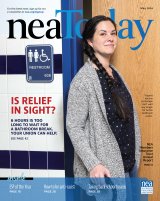1. Build relationships with students.
Spend time getting to know your students. Figure out what they like and don’t like and what kind of learners they are. This can help you to understand your students’ individual needs. If certain students are more introverted and work better alone, consider giving them a chance to work on their own during a group activity.
2. Set classroom rules and expectations.
The first time you meet with your students, establish classroom rules—such as listen and don’t interrupt while others are speaking. This way students know what’s expected of them from the beginning of the school year.
3. Explain what will happen in class that day.
What topics will be covered? What activities will students do? Will there be time for discussion? What assignments will they have? This way your students will know what’s coming.
4. Make lessons engaging.
Plan exercises to keep students focused. These can relate to the lesson and help foster discussion and communication among the students. They’ll have the chance to connect with each other while also diving deeper into the topic.
5. Start class with an activity.
Have a few ideas in your back pocket and use the one that suits the mood of the class that day.
6. Set discussion times.
Let students know in advance when they will be able to talk to each other. This structure encourages them to hold their conversations for the appropriate time.
7. Reward a class if they are on track.
If the group is staying focused and listening respectfully while others are talking, reward them with a movie day, or dedicate one class to a study period. Pick whatever works best for you and your students.
Learn More
Are you an affiliate?







